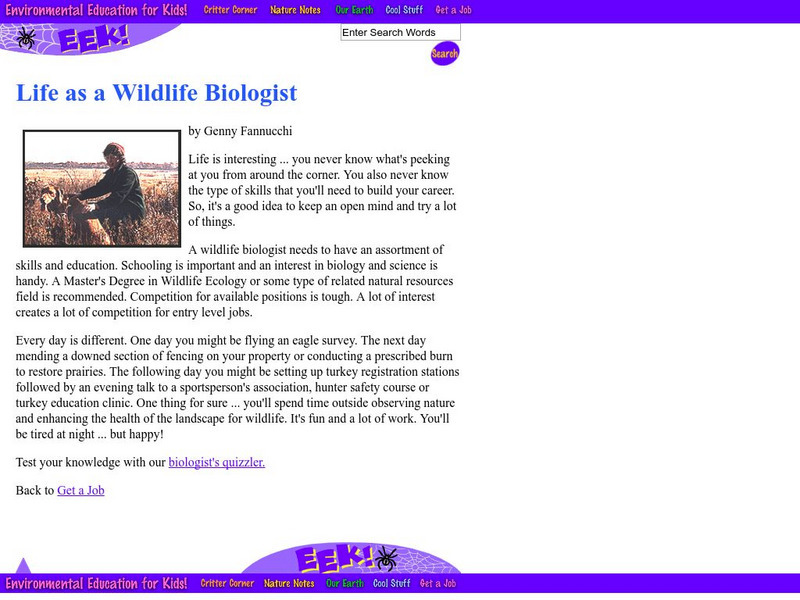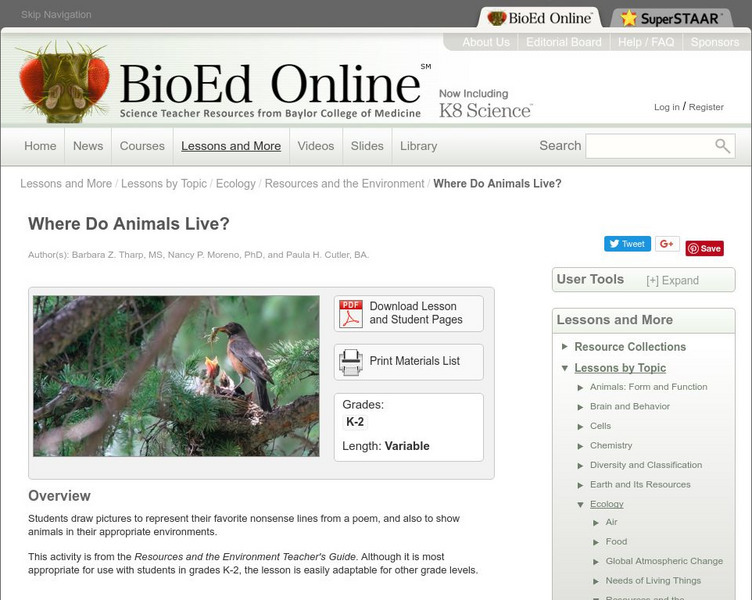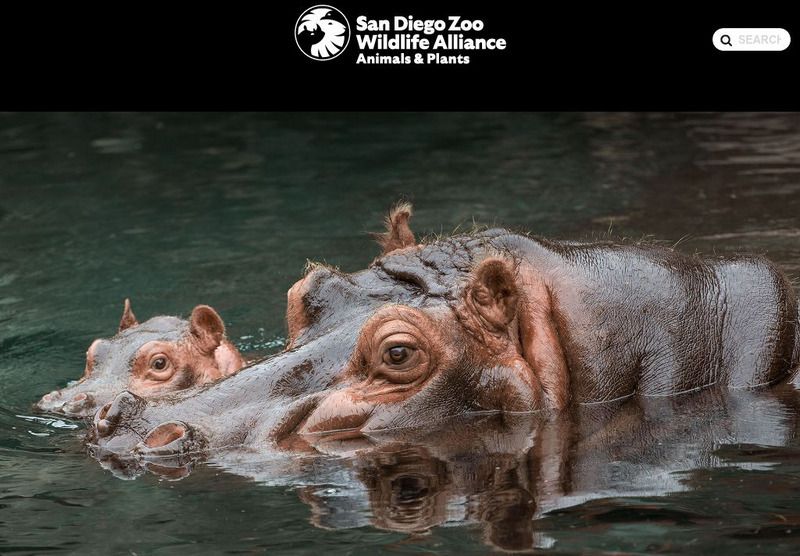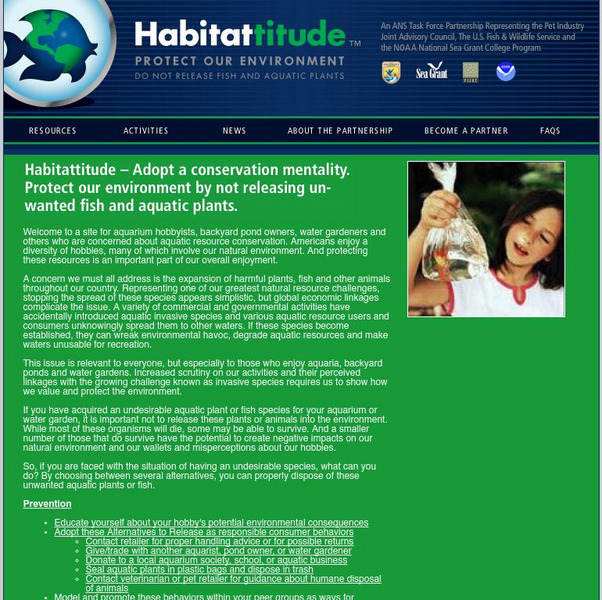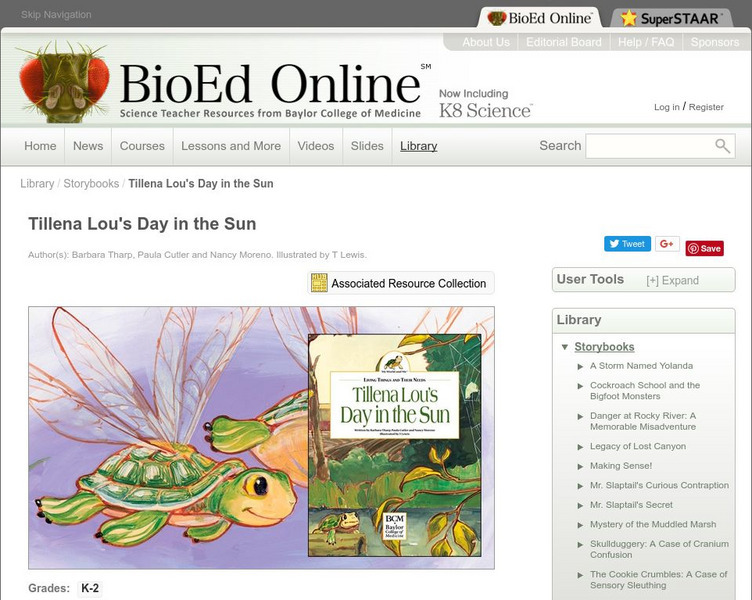PBS
Pbs teachers:n.a.m.i.b. (Namib Animal Mobile of Interesting Birds)
Identify the birds of the Namib desert, describe the different environments in which birds live in the Namib Desert and build a bird mobile.
PBS
Nh Pbs: Nature Works: Temperate Deciduous Forests
NatureWorks offers some fascinating information about the Temperate Deciduous Forests. Students and teachers will learn what makes these forests special, what animals live in this biome, what plants grow in this biome, and more.
World Wildlife Fund for Nature
World Wildlife Fund Russia
This resource provides bilingual news and facts about wildlife issues and projects across Russia. A small collection of beautiful images and video clips. Special section for kids with puzzles and nature-related games such as Rescue the...
Environmental Education for Kids
Eek!: Life as a Wildlife Biologist
This site describes the skills needed for a career in Wildlife Biology. Includes link to a quiz that tests the student's knowledge of Wildlife issues.
Other
Hilton Pond Center
This Hilton Pond Center site is a resource for teachers, students and researchers who are interested in the environment and environmental conservation of animals and plants.
American Museum of Natural History
American Museum of Natural History: Invasive Species O Logy Card
Uncover facts about invasive species by turning over this interactive OLogy card.
PBS
Nh Pbs: Nature Works: Swamps
What characteristics make a swamp a swamp? This site features information on the Great Dismal Swamp, Conifer Swamps, Okefenokee Swamps, Shrub Swamps, Hardwood Swamps, and Cypress Swamps. This site also offers some great photographs of...
Louisiana Department of Education
Louisiana Doe: Louisiana Believes: Social Studies: Grade 3: A Log's Life
Third graders learn about the interdependence of animals and trees in nature and the cycles of growth and decay. Students also learn about the importance of preserving balance in nature and what happens when we upset that balance. While...
BiologyWise
Biology Wise: Classification and Characteristics of Rotifers
Outlines the classification hierarchy of the phylum Rotifera and describes their characteristics and anatomy. Rotifera have survived for up to 80 million years and continue to play an important role in ecological systems.
BioEd Online
Bio Ed Online: Resources and Animals
In this lesson plan students will observe, examine, discuss and draw a walking stick insect or acrawfish in its natural environment in order to understand resources and animals.
BioEd Online
Bio Ed Online: Where Do Animals Live?
In this lesson plan students listen and participate by filling in missing words as the teacher reads a silly poem about places where animals might live. Students are required to draw pictures representing both their favorite nonsense...
Globio
Glossopedia: Temperate Forest
Temperate forests cover much of the Earth. Temperate forest ecology is described as well as the importance to all animal and plant health. Human impact on temperate forests around the world is discussed.
San Diego Zoo Global
San Diego Zoo: Hippotpotamus
This resource presents detailed information about the hippotpotamus, including several photos and an audio clip.
Other
The Nature Conservancy of Hawaii: A Guide to the Order of Trilobites
The trilobite of the months greets you on this award winning site that provides an immense data base of facts on this fascinating but extinct arthropod. Start with the Introduction in the left hand menu bar for easy to understand...
Nature Conservancy
Nature Conservancy: Planet Earth: Oceans and Coasts
Compilation of the Nature Conservancy's content about the ecology of oceans and coasts. Emphasis is on the biodiversity of these habitats and the human impact on the animal and plant life that live in our oceans and on our coasts.
BBC
Bbc: Nature Wildfacts: Hippopotamus
This resource provides detailed information about hippopotamuses.
Other
Aquatic Nuisance Species Task Force: Habitattitude
Dedicated to aquatic resource conservation, this task force addresses the expansion of harmful plants, fish, and other animals and invasive species
A-Z Animals
A Z Animals: Reference: Diet
This entry identifies the defining characteristics of the various diets of animals, including those that are herbivores, carnivores and omnivores.
CommonLit
Common Lit: "Can't We All Just Get Along?" by Bird Brain Science
Earth is full of a variety of living things that interact with one another in many different ways. This informational text explains the various different types of relationships they can have with one another. It also offers guided...
BioEd Online
Bio Ed Online: Tillena Lou's Day in the Sun
Tillena Lou and her siblings spend a lazy day imagining what it might be like if they were other types of animals. What would they need to survive? Synopsis: Tillena Lou explores her home and discovers interesting things about the...
American Museum of Natural History
American Museum of Natural History: O Logy: What's the Big Idea? Biodiversity
Find information about diversity among genes, species, and ecosystems that helps answer questions about the importance of biodiversity and how we can save species from extinction.
Environmental Education for Kids
Eek!: Habitats
Take a look at some of the different habitats that are home to many plants and animals including black bears, owls and various species of birds.
Curated OER
Ny Times Learning Network: Wild Wildlife
In this lesson, students investigate the moral, economic and ecological impacts of the extinction of various animal species. Students first assess how and why people support and refute actions that lead to the extinction of animals. They...





